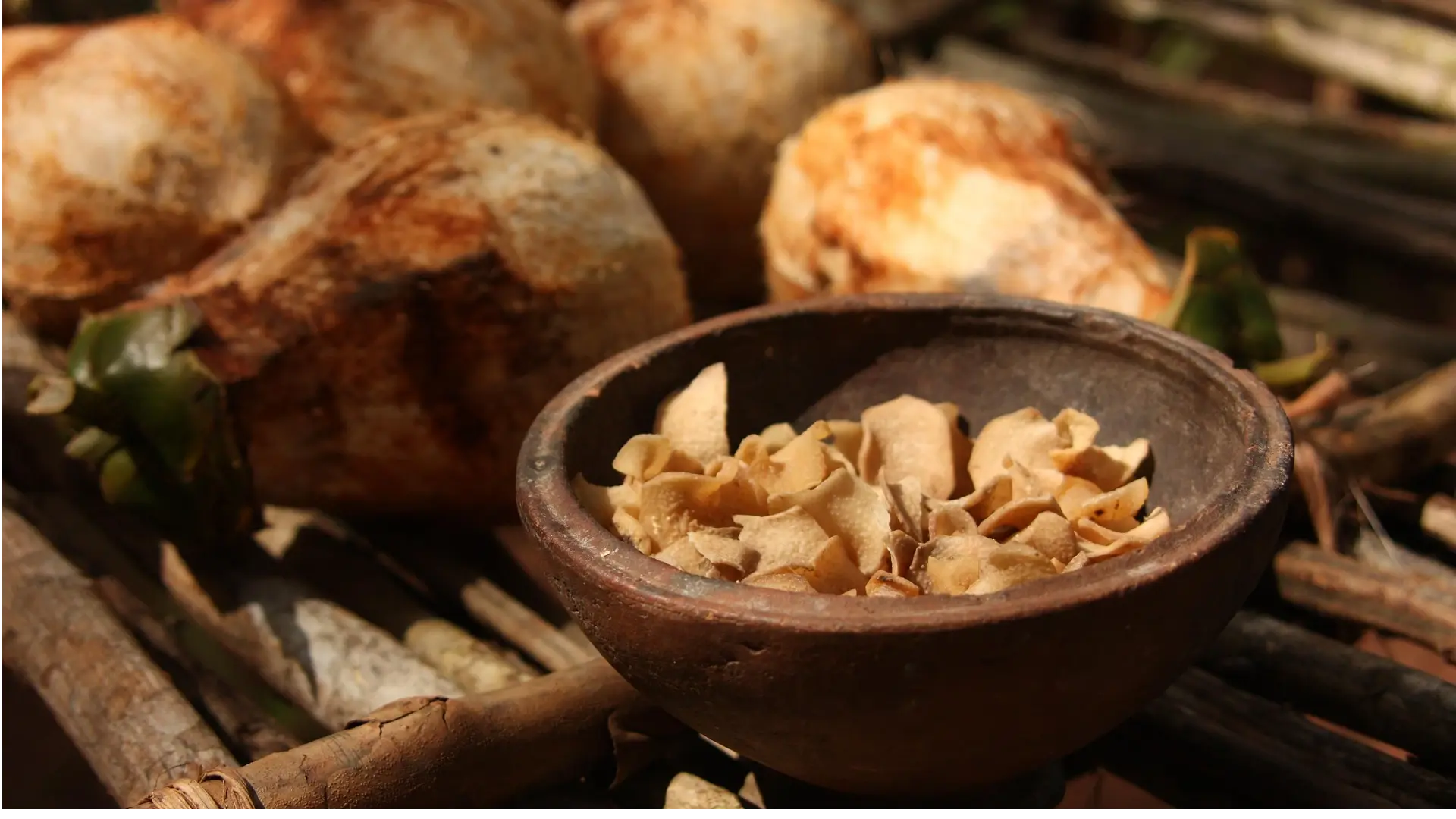
Kenya is famous for its nyama choma, ugali, and flavorful Swahili dishes. But beyond the well-known, there are rich, often-overlooked traditional meals loved by many Kenyans. These dishes carry stories—of family kitchens, local farms, and communities by the lakes and plains. Today, let’s explore five such dishes: irio, matoke, mutura, mbuzi choma, and fish from Lake Turkana. Each has its own history, recipe, and place in Kenya’s culinary heritage.
Irio, also known as mukimo, originated with the Kikuyu people in central Kenya but is now enjoyed across the country. It’s a comforting dish made by cooking and mashing potatoes, green peas, and corn kernels, often with leafy greens like pumpkin leaves or kale for a bright-green finish. Some versions add beans too. The result is a filling mash that beautifully complements stews, choma, or fish. It’s simple, wholesome and nostalgic for many families growing up in farming communities.
How to make it at home: Boil the peas, potatoes (and beans if using) until soft. Drain, then mash. Stir in cooked corn kernels and chopped greens. Season lightly with salt and a bit of butter or margarine. Serve warm with sauce or meat.
Matoke (also spelled matooke) comes from East African highland bananas. Though more widely associated with Uganda, matoke is popular in western Kenya and around Lake Victoria. Green plantains are peeled, simmered in tomato, onion, garlic, and spices with or without meat, until they soften into a flavorful stew. In some regions, matoke is mashed or served with ugali or chapati.
Family memory: My aunt used to cook matoke with smoked fish and tomatoes when we visited western Kenya. The smell would fill the kitchen as the plantains simmered down to a thick, savory sauce.
Mutura is a traditional sausage that most important events in many Kenyan communities once included. Made from goat (or beef) intestines stuffed with a mixture of meaty bits, goat blood, and spices, then boiled and grilled over charcoal, it’s a smoky, rich snack beloved on street corners and at celebrations.
Despite occasional warnings about hygiene, for many Kenyans, mutura remains a taste of tradition and community.
Mbuzi choma (grilled goat) is less flashy than nyama choma but just as beloved—especially in rural homes during celebrations, weddings, and community feasts. The meat, usually legs or shoulders, is rubbed with salt, sometimes lightly marinated, then roasted slowly over coals. The temperature is moderated and turned regularly for even cooking.
Local advice: people often choose fatty cuts or soaked salted ribs—these give sweet, tender meat that melts in your mouth, especially when paired with kachumbari, sukuma wiki, or simple potatoes boiled on the side.
While fish from Lake Victoria, like tilapia or Nile perch, are well-known, far fewer Kenyans taste fish from Lake Turkana. This remote but massive lake in northern Kenya is home to species unique to the desert-source ecosystem. Locals clean, fry or stew fresh recordings in ginger, garlic, tomato, and mild spices—and serve with ugali or rice.
For communities near the lake, fish isn’t just food—it symbolizes survival in arid land and connection to Turkana culture.
Honorable Mentions: Other Forgotten Treasures
While our spotlight is on those five dishes, there are other gems:
These dishes often accompany the featured foods and add layers of flavor, heritage, and nutrition.
Sample Rural-Style Day
Imagine visiting a rural homestead in central Kenya:
Friendly laughter fills the hut. Under a hanging lamp, stories swirl about harvests, celebrations, and old recipes—each bite richer than the last.
Tips for Food Lovers & Home Cooks
Kenya’s food is more than nyama choma and pilau. It’s also irio, mutura, matoke, mbuzi choma, and fish from Lake Turkana—everyday heroes of taste and culture. These dishes may be forgotten by urban menus, but they live deeply in memories, festivals, and rural homes.
The next time you sit down to eat, consider what stories your meal tells. Try one of these traditional dishes—or better yet, ask someone local to cook it with you. You’ll connect not only to the flavor, but to Kenya’s past, land, and community.